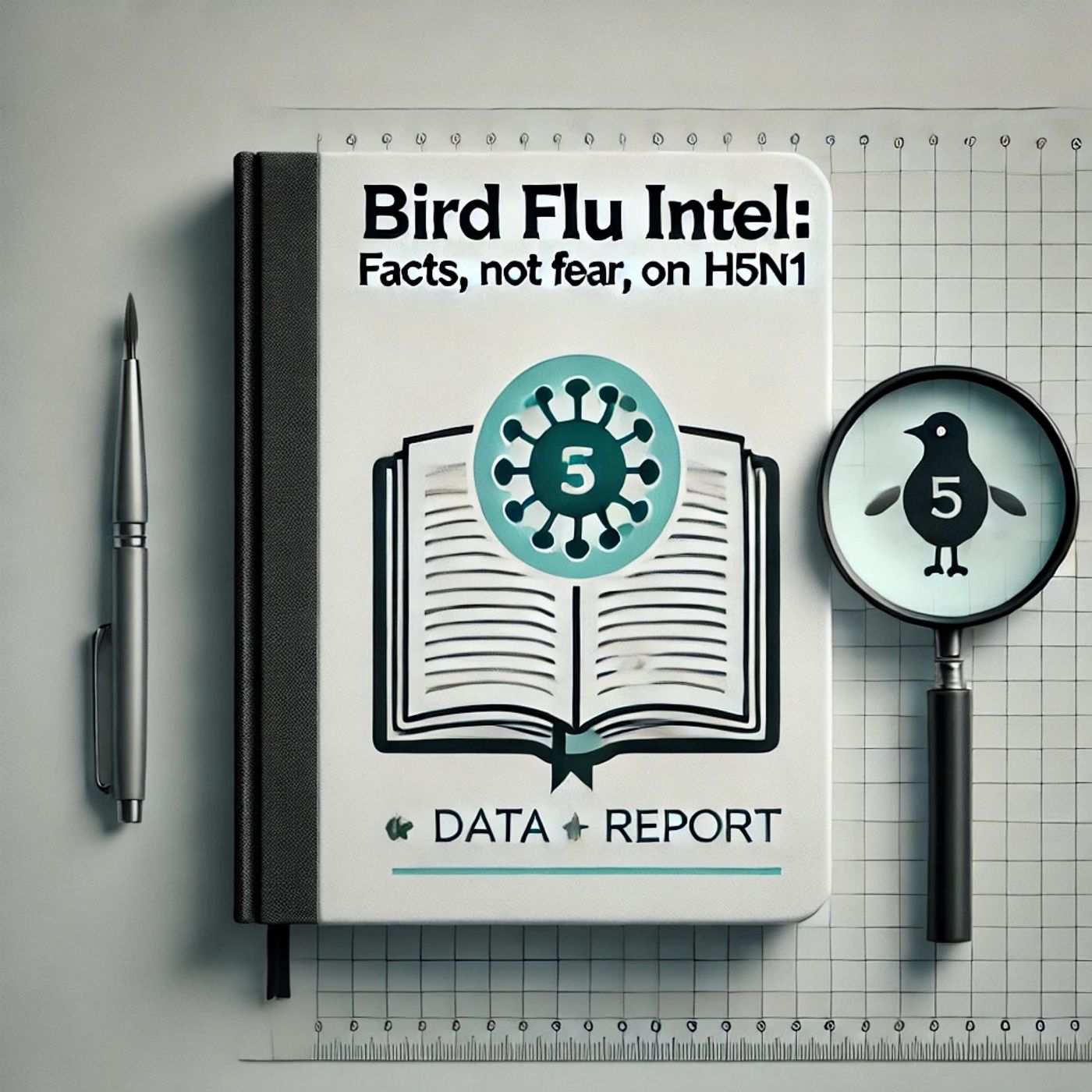Podcast Episode Details
Back to Podcast Episodes
H5N1 Bird Flu: Separating Myths from Facts and Understanding the Low Risk to Human Health
Welcome to Bird Flu Intel: Facts, Not Fear, on H5N1, a Quiet Please production. Today, let’s cut through the noise and address some of the biggest myths and facts on H5N1 avian influenza, so you get evidence—not anxiety.
Myth one: H5N1 bird flu is spreading easily from human to human and causing widespread sickness. Scientific evidence tells us this is not true. According to the CDC, nearly all recent human infections with H5N1 came from direct contact with infected animals, especially poultry and wild birds. There’s no confirmed person-to-person transmission in the United States, and globally, the risk to humans remains low. Most cases reported in 2025 involved people exposed to sick or dead birds, not other people.
Myth two: Catching bird flu means severe illness or death is inevitable. Actually, most human H5N1 infections documented in the U.S. since 2024 have been mild, with symptoms such as pink eye or minor respiratory issues. The CDC and several state health departments note that the only U.S. fatality from H5N1 in 2025 involved a person with significant underlying health conditions and unique exposures. While H5N1 can be deadly, especially in regions like Cambodia, where higher fatality rates stem from limited access to care, these are rare and nearly always involve direct animal contact.
Myth three: You can get H5N1 bird flu from eating chicken, eggs, or drinking milk. This is false. According to the Cleveland Clinic, properly cooked poultry and pasteurized dairy are safe; infected animals are removed from the food supply before products reach consumers. The real risk is contact with raw fluids from infected animals, not consuming finished food products.
Myth four: Because H5N1 is highly pathogenic in birds, it is just as dangerous for humans. The truth is, “highly pathogenic” refers to how quickly the virus can kill poultry, not how it behaves in people. While scientists watch closely for mutations, the current strains have not become highly virulent nor easily transmissible among humans in the U.S.
So, how does misinformation about H5N1 spread—and why is it harmful? Rapid sharing on social media, sensational headlines, and confused reporting often mix up facts, stir fear, and undermine public trust. Fear-driven myths can lead to unnecessary panic, stigmatize workers, and disrupt food consumption, creating real-world harm.
To evaluate information quality, here are proven tools you can use:
- Check the source. Is it a reputable organization like the CDC, WHO, or your local Department of Health?
- Look for dates and recent updates; health data changes quickly.
- Compare multiple credible sources, not just one outlet.
- Pay attention to scientific explanations and stated uncertainties.
What’s the current scientific consensus? Experts agree H5N1 is widespread in wild birds and some mammals, outbreaks in poultry and dairy cows continue, and rare human cases do occur among those with close animal contact. Vigilant surveillance is ongoing, and the public health risk to most people remains low.
Legitimate scientific uncertainties remain, especially regarding the mutation potential of H5N1. Influenza A viruses can change rapidly, which is why researchers are constantly monitoring for signs the virus could spread more easily between humans or cause more severe illness. This is an evolving area getting global attention.
Thanks for tuning in to Bird Flu Intel: Facts, Not Fear, on H5N1. Join us again next week for more evidence-based reporting. This has been a Quiet Please production. For me, check out Quiet Please Dot A I.
For more http://www.quietplease.ai
Get the best deals https://amzn.to/3ODvOta
Published on 2 weeks, 1 day ago